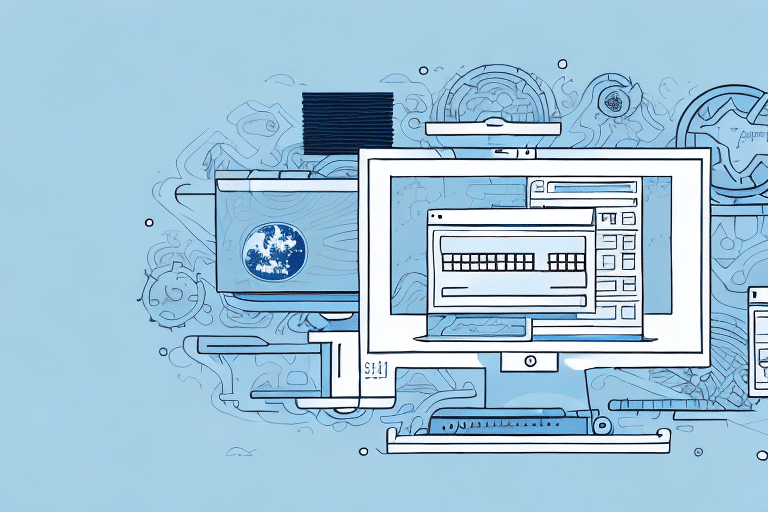Understanding the Importance of Package Types in UPS WorldShip
In the realm of logistics and shipping, selecting the appropriate package type is pivotal for optimizing your shipment process. The UPS WorldShip software offers a diverse range of package types tailored to various sizes, shapes, and weights of items. Choosing the right package type directly influences shipping costs, delivery timelines, and overall operational efficiency.
For instance, using a package type that doesn't adequately protect your items can lead to damage during transit, resulting in increased returns and diminished customer satisfaction. Moreover, accurate package classification aids in precise cost calculations, ensuring that you avoid unforeseen expenses or shipping delays caused by incorrect package specifications.
According to the Statista Report on Distribution Network Optimization, businesses that meticulously manage their packaging strategies can reduce shipping costs by up to 15%, highlighting the significant impact of proper package type selection.
Configuring and Customizing Package Types in UPS WorldShip
Step-by-Step Guide to Setting Up Package Types
- Access the Ship Tab: Open the UPS WorldShip software and navigate to the "Ship" tab.
- Select Package Type: Click on the "Package" option and choose the appropriate package type from the dropdown menu.
- Input Dimensions and Weight: Enter the accurate dimensions and weight of your item. Utilize a reliable scale to ensure precision.
- Special Handling: If shipping items requiring special handling (e.g., hazardous materials, perishable goods), select the relevant package type from the available options.
- Save Package Type: After entering all necessary information, click "OK" to save the package type for future use.
Customizing Package Types for Specific Business Needs
If your business deals with unique items that don't fit standard package categories, UPS WorldShip allows you to create custom package types. This customization ensures that your specific packaging requirements are met, enhancing both protection and cost-efficiency.
- Open Package Type Editor: Within the "Package" menu, select "Package Type Editor".
- Create New Package Type: Click on the "New" button and input the required dimensions and weight.
- Rename Package Type: Customize the name to reflect specific attributes, such as "Fragile - Glassware" or "Oversized Electronics".
- Save and Implement: Save the new package type and integrate it into your shipping workflow.
Optimizing Shipping Costs and Efficiency
Strategic Package Type Selection
Selecting the most efficient package type can lead to significant cost savings. Opt for the lightest and most compact package that securely accommodates your item. This practice reduces dimensional weight charges, a common pricing method where shipping costs are based on package size rather than weight.
Utilizing Data for Cost Optimization
Leveraging shipment data to analyze package type performance can uncover opportunities for cost reduction. According to a report by Forbes Technology Council, businesses that utilize data analytics in their supply chain can achieve up to a 20% increase in efficiency.
- Analyze Shipment Trends: Monitor which package types are most frequently used and their associated costs.
- Identify Cost Drivers: Determine which package types contribute most to shipping expenses and explore alternatives.
- Implement Optimization Strategies: Adjust package types based on data insights to enhance cost-effectiveness.
Best Practices for Managing Package Types
Regular Review and Updates
Periodically assess your package types to ensure they align with current inventory and shipping requirements. The logistics industry is continually evolving, and staying updated with the latest packaging trends can provide a competitive edge.
Staff Training and Standardization
Ensure that all team members are proficient in selecting and using the correct package types. Standardized procedures minimize errors, leading to smoother operations and reduced shipping complications.
- Provide Comprehensive Training: Conduct regular training sessions on package type selection and UPS WorldShip functionalities.
- Develop Standard Operating Procedures: Create clear guidelines for package type usage to maintain consistency.
- Utilize Automation Tools: Implement features within UPS WorldShip that automate package type selection based on item attributes.
Troubleshooting Common Issues with Package Types
Common Challenges and Solutions
- Invalid Weight or Dimensions: Ensure all measurements are accurate. Use reliable measurement tools and double-check entries in UPS WorldShip to prevent shipping cost inaccuracies.
- Exceeding Size or Weight Limits: Familiarize yourself with UPS package restrictions to select an appropriate package type that can accommodate your items.
- Incomplete Labeling: Verify that all necessary labels, including barcodes and tracking numbers, are printed completely to avoid shipment delays.
For extended troubleshooting, refer to the official UPS Packaging and Supplies Help Center for detailed guidance and support.
Enhancing Customer Satisfaction with Proper Packaging
Impact of Package Types on Customer Experience
The choice of packaging directly influences the customer’s perception of your brand. Secure and appropriately sized packaging not only protects the product but also enhances the unboxing experience.
- Minimize Damage: Proper packaging reduces the risk of product damage during transit, leading to fewer returns and exchanges.
- Timely Delivery: Correct package types ensure efficient handling and expedited delivery, meeting customer expectations.
- Professional Presentation: Well-chosen packaging reflects professionalism and attention to detail, fostering customer trust and loyalty.
A study by NPD Group reveals that 70% of consumers consider packaging as a key factor in their purchasing decisions, emphasizing its role in customer satisfaction.
Ensuring Compliance and Sustainability in Packaging
Adhering to Legal Regulations
Compliance with local and international packaging regulations is essential to avoid legal penalties and ensure the safe transport of goods. This includes proper labeling for hazardous materials and adhering to size and weight restrictions set by shipping carriers.
- Stay Informed: Regularly update yourself with the latest packaging regulations from authoritative bodies such as the FDA and ISO.
- Implement Compliance Checks: Use UPS WorldShip features to ensure your package types meet all necessary standards before shipping.
- Consult Experts: When in doubt, seek advice from logistics professionals or legal experts specializing in shipping regulations.
Promoting Environmental Sustainability
Environmental considerations are increasingly crucial in packaging decisions. Opting for sustainable packaging materials can reduce your carbon footprint and appeal to environmentally conscious consumers.
- Choose Recyclable Materials: Utilize packaging made from recyclable materials like cardboard and certain plastics.
- Reduce Packaging Waste: Select package types that minimize excess space and materials, decreasing overall waste.
- Adopt Reusable Packaging: Implement reusable packaging solutions where feasible to extend the lifecycle of your packaging materials.
According to the EPA Sustainable Materials Management hierarchy, reducing and reusing packaging materials are top priorities for minimizing environmental impact.
Integrating UPS WorldShip Package Types with Other Shipping Tools
Seamless Integration for Enhanced Efficiency
Integrating UPS WorldShip with other shipping software and tools can streamline your operations, reduce manual input, and enhance data accuracy. Compatible integrations include platforms like ShipStation, QuickBooks, and Shopify.
- Automate Package Selection: Integrations can automatically select the appropriate package type based on item data, reducing errors.
- Centralize Data Management: Manage all shipping data from a single interface, improving visibility and control over your logistics processes.
- Enhance Reporting: Combine data from multiple sources to generate comprehensive reports, aiding in strategic decision-making.
For more information on integrating UPS WorldShip with other tools, visit the UPS Integration Services page.
Monitoring and Analyzing Shipment Data with Package Types
Leveraging Data for Continuous Improvement
UPS WorldShip offers robust data analysis capabilities that enable you to monitor shipment performance based on package types. Analyzing this data helps identify trends, assess cost-effectiveness, and uncover areas for improvement.
- Access Shipment History: Navigate to the "History" tab in UPS WorldShip to view past shipments.
- Select Package Type: Filter shipments by specific package types to analyze their performance metrics.
- Review Key Metrics: Examine data points such as shipping costs, delivery times, and damage rates associated with each package type.
- Implement Data-Driven Changes: Use insights gained from data analysis to adjust your packaging strategies for enhanced efficiency and cost savings.
Implementing data-driven strategies aligns with best practices outlined in resources like the Harvard Business Review on Data Utilization.
Conclusion
Properly setting up and managing package types in UPS WorldShip is essential for optimizing your shipping operations. By selecting the right package types, customizing them to meet your specific needs, and adhering to best practices, you can enhance efficiency, reduce costs, and improve customer satisfaction. Additionally, staying compliant with legal regulations and embracing sustainable packaging practices not only benefits your business but also contributes positively to the environment. Leveraging data analytics and integrating UPS WorldShip with other shipping tools further streamlines your logistics processes, positioning your business for sustained success in a competitive market.




















